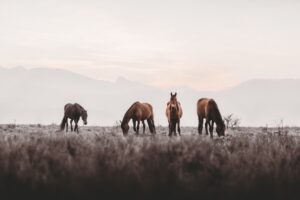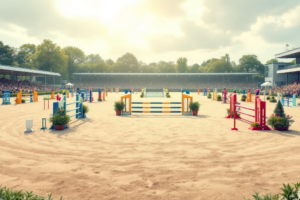There’s a timeless elegance to traditions rooted in history, and Showing is no exception. This equestrian discipline harks back to an era when kings and queens, adorned in their finest riding attire, paraded their meticulously bred horses through showgrounds, embodying the grandeur of days gone by.
The Historical Gallop, But there are some myths we need to slay about Showing right out of the gates. This is not a sport reserved for the pony with the biggest makeup box, the finest tweed coat, the best-trained rider, the fanciest lineage, or the most expensive auction horse. Showing is truly a sport for all equestrian enthusiasts, especially those of you too terrified to enter the showjumping ring or who wouldn’t know a piaffe from a piano. Equestrian Life chatted to the Gauteng chairperson of Showing South Africa (SASA), Sue Cook, a name not only synonymous with Showing but a true passionate equestrian.
Showing in South Africa, “Showing in South Africa is largely modelled on the format and history of Showing in the UK, as much of our equestrian heritage has been inherited from there. Our core Showing classes—hacks, hunters, and show riding horses—mirror those in the UK. However, South Africa has introduced some innovations of its own. For instance, we likely pioneered working riding classes before they were even conceived in the UK,” says Sue. Sue explains that the history of Showing in South Africa has its roots in agricultural shows, which farmers primarily organised. In the 1800s and early 1900s, these events were a significant part of rural life, offering a place for people to gather, showcase their finest livestock, and perhaps make a sale. Initially focused on breeding classes—what we now refer to as in-hand classes, where the best Welsh pony, Arab, or thoroughbred was judged—these events gradually evolved to include riding classes, giving rise to the Showing discipline as we know it today. Sue has played an important part in the sport for as long as many in our industry can remember. She says, “I showed my first ponies in South Africa in hand back in 1969. After that, I spent quite a long time working with Arab horses. I also worked at a stud and show horse producer, where we focused on producing show hacks and hunters. Eventually, I began breeding Welsh ponies and started judging around 1984.”
The Showing Evolution, The evolution of Showing is a fascinating blend of tradition and progress, especially in South Africa. While the sport is deeply rooted in history, there’s always a question of how much we should preserve and how much should evolve. “We cling to a lot of the traditions. The type of shows we have today are probably very much the same as they always have been in the UK. What you might call the core disciplines—show hacks, hunters, and riding horses—remain largely unchanged. These classes are designed to showcase the absolutely perfect horse. However, we’ve also evolved to make Showing more inclusive, allowing everyone to participate and enjoy the sport like any other discipline,” adds Sue. The way that SASA has managed to achieve this is in part by introducing SA riding horse classes, which are quite basic. In these classes, everyone is in the ring together, and they are judged on the best trot, walk, canter, turnout, and rider. These classes are an ideal way for beginners to get started or for anyone to simply have fun. Encouraging new riders and new entrants to the sport is essential for the success of the discipline. Grassroots is also a critical part of SASA’s vision and mission. Any long-suffering SANESA (South African National Equestrian Schools Association) parent will understand how important showing is to their child. Primping and priming ponies, hauling out the baby oil, and spending hours on YouTube to perfect the plait, all for their child’s three minutes of fame in the ring “We actively encourage the SANESA classes because we see them as the grassroots of our sport. We hope that kids start there, enjoying performance riding, working riding, and working hunters, and then gradually move on to the more formal aspects of Showing.”
Turnout, Turnout, Turnout, While I am not joking about the baby oil for the extra shine, the extra hold hairspray, the purple shampoo, and the Maizena for the extra white socks look, Sue does say there are a lot of misconceptions about turnout. “The point of turnout of both horse and rider is that you’re trying to make the horse look its best. So it’s plaited, because that is a tradition in Showing which goes back to when horses were ridden in war, and you didn’t need their manes getting tangled up with a sword when fighting on horseback. “Turnout can be as simple or as difficult as you want it to be. For horses, you don’t have to put on all the makeup – basically, all you require is a nice, clean horse. But when you get to the highest level when you’re competing at the Horse of the Year Supreme classes, then obviously your professional showman will use every trick in the book to make their horse stand out from another 20 horses that are equally good,” says Sue. For a beginner, Sue says all you need is a nice, clean horse with a plaited mane and a nice well, brushed-out tail. She adds that the tail doesn’t even need to be plaited. And although SASA has not rules but rather recommendations for what a rider should wear, the only thing they are really strict on is no white jodhpurs. These must be cream, beige or brown. “People tend to get into a panic because they think they’ve got to have a tweed coat for this, and navy coat for that, a bling browband for this and a plain browband for that. But frankly, if I’m judging a class of children and their ponies and I’ve got a little boy in a black jacket or if it’s SANESA and the child is in a school blazer, that’s absolutely fine. I’m not going to penalise somebody on the way they’re dressed. I’m going to penalise them on the way their horse performs because that’s what we’re looking at,” says Sue.
Between You and Your Horse, The one thing Showing really tries to demonstrate is the connection between the horse and the rider because they need to be in perfect harmony. It is also a sport that Sue believes is exceptionally good for the young horse. “It’s excellent for young horses as it introduces them to the arena with their rider in a relatively low-pressure environment, especially when compared to show jumping and dressage. In these settings, all the horses are trotting around together, which is a great way for the rider to learn more about their horse and for the horse to become more comfortable in the arena. It also helps build that critical trust between horse and rider. “It’s also great for older riders who no longer want to be ultra-competitive but still have a horse they love and want to enjoy. Showing is ideal for that. It’s not as demanding as dressage, and it’s much safer than show jumping. After all, as we get older, we don’t bounce as easily!” adds Sue. Not to mention putting your young horse in a utility class where they get to stretch their minds, get over their fear of horse-eating baskets, and get over the boredom of doing the same thing all the time.
Choosing your Show Horse, So what should you look for in your next show horse? Ideally, match the horse to the discipline you prefer if you want to be competitive. A show hack is not always the perfect hunter. And while looking good is something you can achieve through turnout, try to look for a horse with four straight legs a strong back and that moves reasonably well. The rest you can work on. “Temperament is the most important thing. A horse can be the most beautiful animal in the world, but if it doesn’t have the right mind, it’s never going to do well in the show ring. You need a horse that likes people. It’s no use having one that’s suspicious of humans; it has to be happy to work with the rider. So, temperament comes first, followed by good basic conformation.” And for children using the 24-year-old school pony in the utility entry-level newcomers class, should they just get into the show ring and have fun? Sue says, “Absolutely. No one’s going to worry about that. We have a saying: the younger the child, the older the pony. And that’s perfectly true. We’re delighted to see little riding school ponies in the working riding classes because that’s the best way for kids to build confidence. “We have ponies well into their 20s competing very successfully in all sorts of showing classes. That’s what we like to see. We don’t take age into account when we’re judging them.”
Taking up Showing, There is no doubt that Sue is exceptionally passionate about the sport and she urges everyone to try Showing. “Showing is absolutely more attainable as a sport. You don’t have an upper echelon that’s out of reach, like in show jumping or dressage. Many people do this for fun, and in Showing, the focus is on the horse, not on who you are, where you ride, or who you know.” “The most important thing to remember is that there’s a Showing class for everyone. Just because your horse isn’t the most beautifully conformed doesn’t mean you can’t participate. And as for riders, it’s not a beauty contest—it’s an open field for everybody. Come and have fun,” ends Sue.
If you want to find out more about the discipline, pop on over to Showing SA’s website, contact the chairperson in your region and ask questions.

















